John Hurrell – 19 November, 2021
Close up, things change and the surfaces intrigue through printmaking or drawing techniques on plastic—artists like Johns or Polke have done this—becoming manifest. Such marks inhabit a different sort of planar space than the softer more integrated scumbled backgrounds, and start a ‘conversation'. Their edges are harsher, the mottled internals more strident, the random puddled blobs more piercing though less controlled.
Matt Arbuckle here at Two Rooms presents seven atmospheric abstractions that suggest light-drenched summer plains with brooding storms looming overhead. Alluding to McCahon, Sutton, Rothko and at times Polke, these works (on knitted polyester voile, not absorbent canvas) are busy in their treatment of surface, having not only watery acrylic stained sloshes but also what looks like patches of frottage (gritty driveway texture) or stencils (wire mesh). Little chunks of piecemeal pattern hover over the grey-yellow mist (or polluting smoke) subtly linking the project with an Ernstlike surrealism.
From a distance, the late afternoon light over the landscape (beaming through roiling clouds) is what grabs you. Most rectangles seem to be of impending downpours coalescing above brightly illuminated dry wheatfields. The more dramatic works have a wide tonal range, while the more uniform ones have less filmic or narrative potential, being like a sort of unread page. The palette tends to be hot, sticky and oppressively steamy.
Close up, things change and the surfaces intrigue through printmaking or drawing techniques on polyester—artists like Johns or Polke have done this—becoming manifest. Such marks inhabit a different sort of planar space than the softer more integrated scumbled backgrounds, and start a ‘conversation’. Their edges are harsher, the mottled internals more strident, the random puddled blobs more piercing though less controlled.
These 1635 x 1330 mm works are more complicated than what you initially realise. They all have a structure of about half a dozen, stacked-up horizontal bands, divisions that break down into amorphous meteorological hazes they partially hide behind. Sometimes Arbuckle’s apparent fingerpainting agitates the liquid marks, or the emulsion is vertically combed but aligned in horizontal rows, creating strange spiky traversing ‘fences’ or rolling advancing waves of ‘barbed wire’.
The last time I saw an Arbuckle show most of the works were much larger. I think I prefer these smaller ones. The artist now seems to have more control over his orchestrations (though he might not think that is desirable). In Odds and Evens, In the Echoes and Look at My Hands, Arbuckle successfully packs in a lot of resonances: the frenetic alongside geometrical tightness. Romanticism and Classicism; Dionysus and Apollo; hand in hand. Fascinatingly paradoxical stuff.
John Hurrell
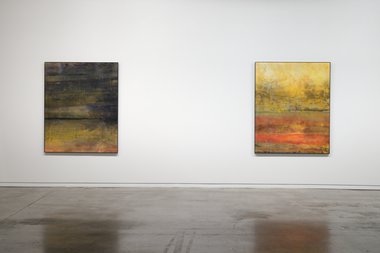
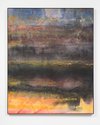

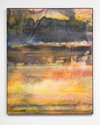
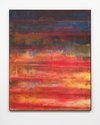
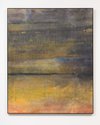
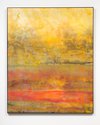

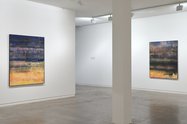
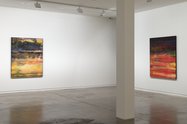
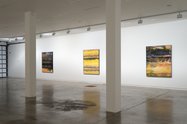
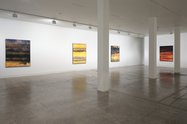
 Advertising in this column
Advertising in this column Two Rooms presents a program of residencies and projects
Two Rooms presents a program of residencies and projects



This Discussion has 0 comments.
Comment
Participate
Register to Participate.
Sign in
Sign in to an existing account.